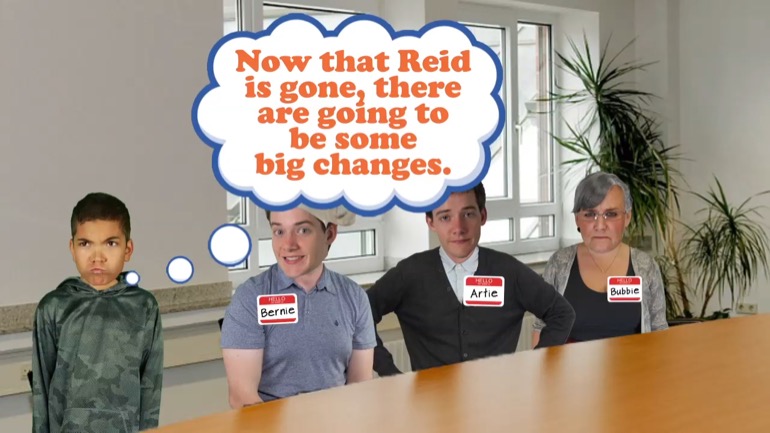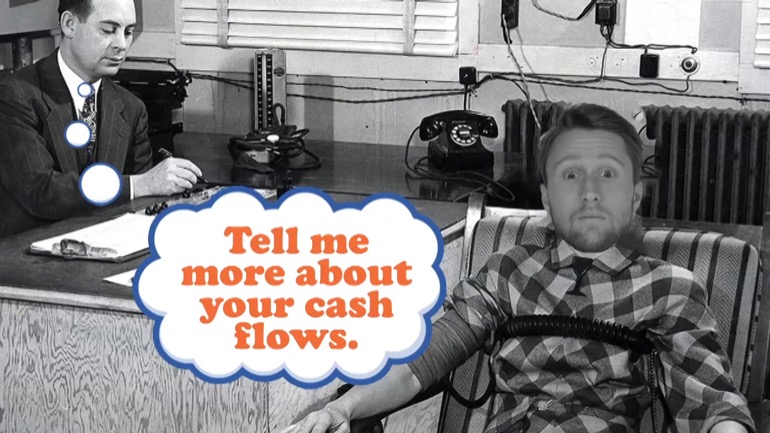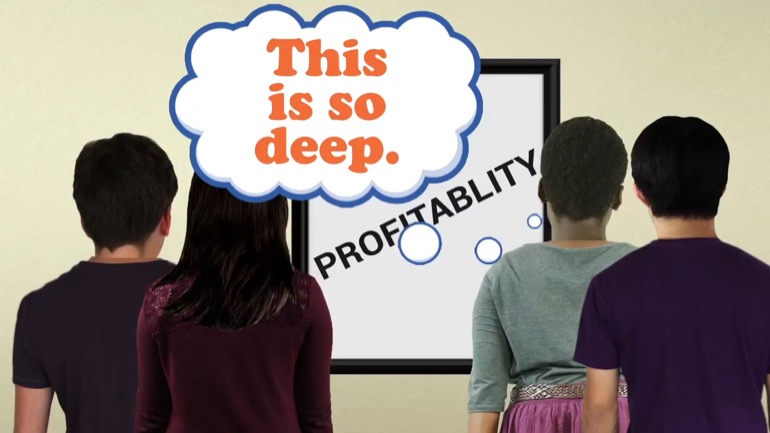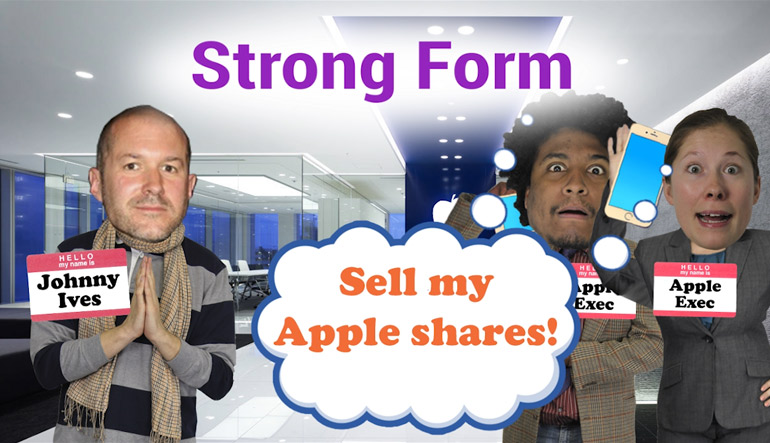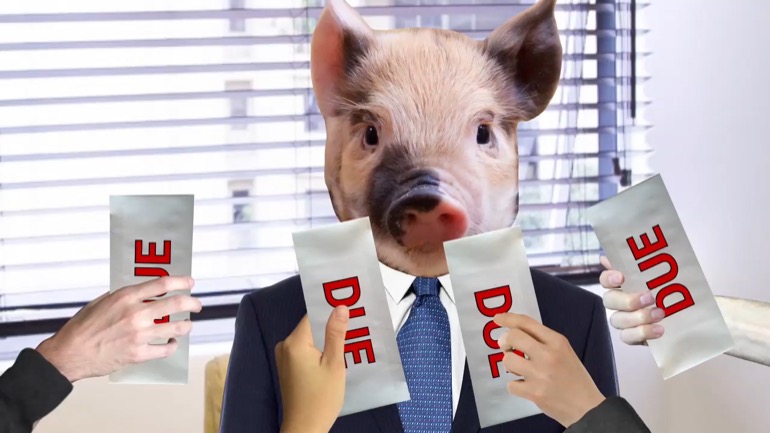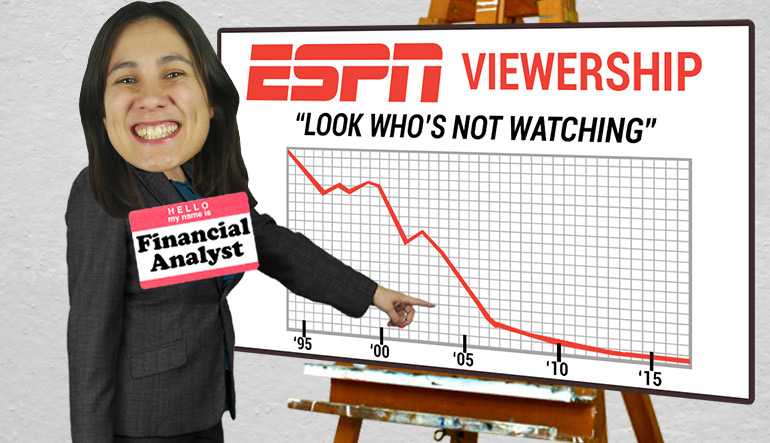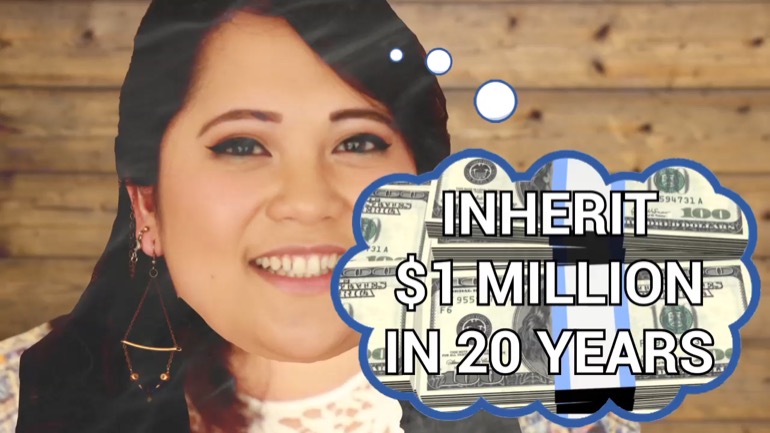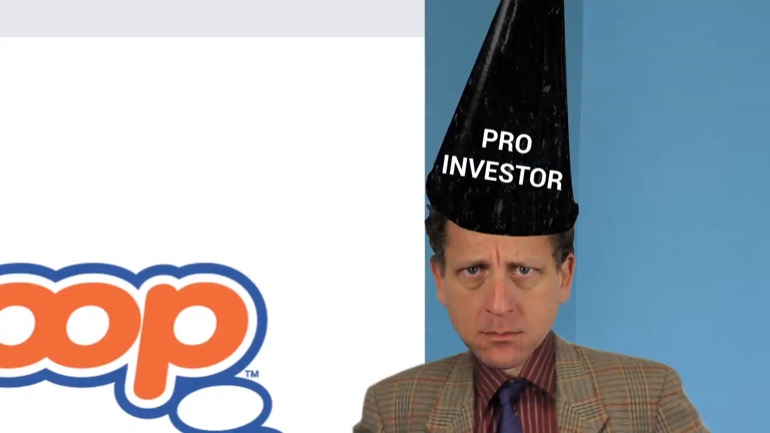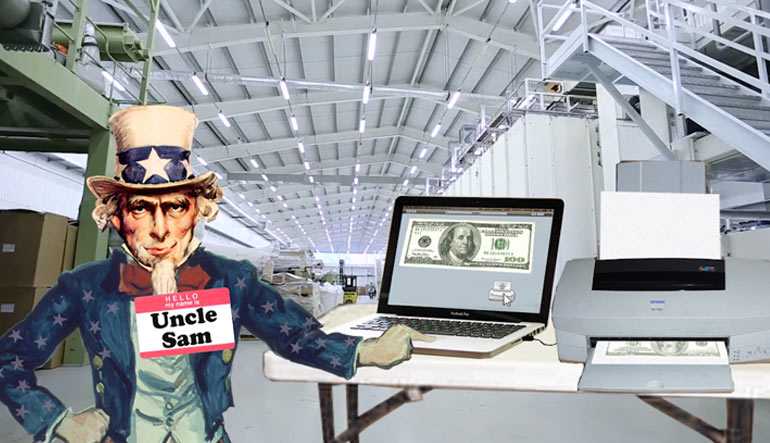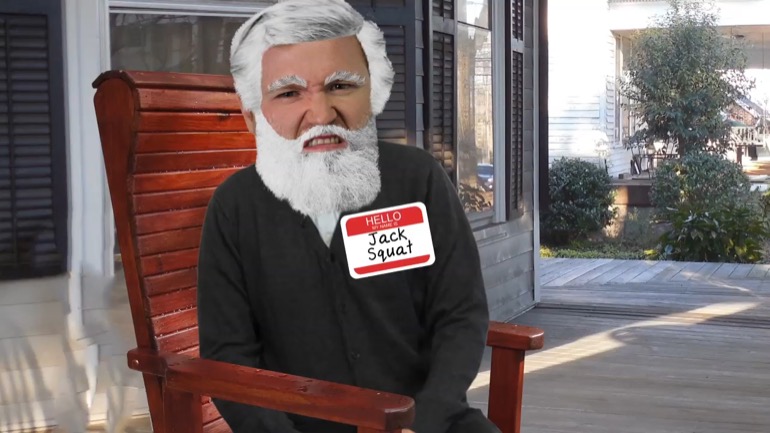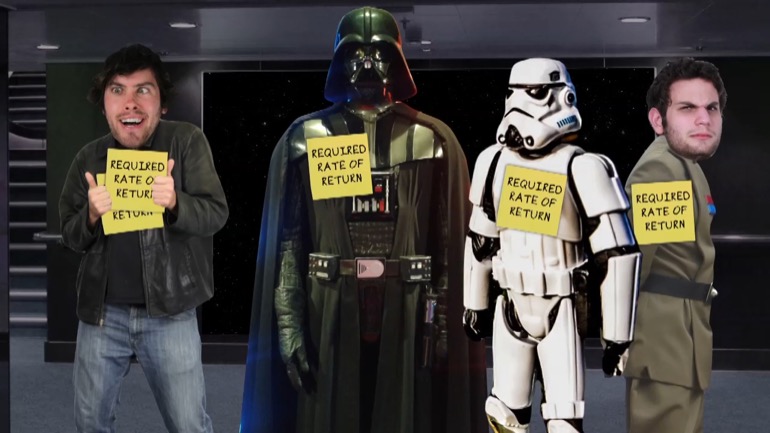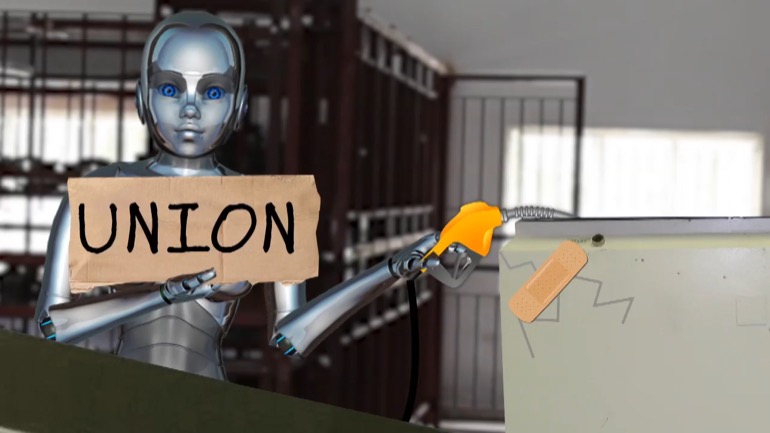ShmoopTube
Where Monty Python meets your 10th grade teacher.
Search Thousands of Shmoop Videos
Principles of Finance Videos 156 videos
Okay, so you want to be a company financial manager. It's basically up to you to make money for the shareholders. It would also be swell if you mad...
How is a company... born? Can it be performed via C-section? Is there a midwife present? Do its parents get in a fight over what to name it? In thi...
What is an income statement, and why do we need it in our lives? Well, let's take a look at an income statement for Year 1 of the Sauce Company, an...
Principles of Finance: Unit 7, Figuring Out Discount Rates In Net Present Value Calculations 5 Views
Share It!
Description:
How do you figure out discount rates in net present value calculations? Good news: it requires absolutely zero coupon-clipping.
Transcript
- 00:00
principles of finance a la shmoop figuring out discount rates in net
- 00:05
present value calculations well let's start simply people we're taking a view [Blade Runner drone company logo]
- 00:11
of your drone company Bladerunner a few years after its IPO tweaking the numbers [person writing numbers]
- 00:16
so that they you know live in this vacuum well here are the numbers you [person vacuuming room]
- 00:19
internally believe at this moment as they relate to your future a billion of
Full Transcript
- 00:23
revenues this year 1.2 next one point for the next and one point six the year
- 00:28
after that cash earnings have 300 and 400 and 500 and 600 and note the big
- 00:33
focus on cash earnings here your company has had a ton of capex or capital
- 00:38
expenditure to build its own battery and assembly and other automated plant so it
- 00:42
has a ton of depreciation and still filtering through the income statement
- 00:46
right like the cash has already gone out to buy those things and now the
- 00:50
buildings and stuff have to be depreciated in fact in this year of 300 [white board with numbers]
- 00:54
million in cash earnings the GAAP accounting earnings are just a hundred
- 00:58
million because the company is depreciating two hundred million dollars
- 01:01
of previously spent capital on its battery plant will blad your Bladerunner
- 01:06
stock ticker is trading today such that gives you a capitalization or market
- 01:11
capitalization of 20 times this year's cash earnings of 300 million bucks or
- 01:15
market value of 6 billion dollars well the company has 500 million in cash on
- 01:20
the books and no debt so it's equity capitalization is 5.5 billion well the
- 01:25
stock used to have 20 million shares outstanding but for the purposes of
- 01:29
making it easier to digest in this course the company kindly split its
- 01:33
stock five for one so that now there are exactly a hundred million shares
- 01:37
outstanding and those shares today trade for 60 bucks each and just for
- 01:42
super-duper clarity note that what you get for that 60 bucks you get five bucks
- 01:46
in cash you get cash profits or cash earnings this year of 3 bucks you get a
- 01:51
projected 4 bucks of cash earnings next year and then 5 the next in 6 the next
- 01:56
so if you believe these Grothe projections will actually happen well
- 02:00
then you're paying 10 times cash earnings for the company 3 years from
- 02:04
now and you mumble as well that well at that point the company will probably
- 02:07
have something more like 10 or 15 or 20 bucks a share in cash beyond the 5
- 02:12
dollars where they have in cash today well if in the out year
- 02:14
the company has say 15 dollars a share in cash well then at a flat $60 stock
- 02:20
price like it doesn't move for three years investors will then be paying $45
- 02:25
for the earnings producing ability or equity value of the company at that
- 02:29
point when it's supposed to produce six bucks home that would then be six
- 02:33
dollars of cash profits against the $45 equity cap or a huge free cash flow
- 02:38
yield yes that's what it's called of six dollars over forty five or about
- 02:43
thirteen point three percent bottom line if the company hits its growth
- 02:48
projections big if they're all else staying the same this stock ain't gonna [stock rising]
- 02:52
be at sixty bucks in three years it'll be way higher so anyone yet noticed that
- 02:56
the projections all have even numbers magically they grow revenues by two
- 03:01
hundred million dollars a year in cash earnings by a hundred million dollars a
- 03:05
year hmm sounds like deep accurate careful thinking to you [man working on laptop]
- 03:09
well the idiot who put together these lazy estimates this guy just slap them [man at computer]
- 03:13
into a Google sheet and mumbled anyone think he surveyed a hundred retailers
- 03:19
and asked what they thought they'd be ordering next year and the next and the
- 03:23
next did he survey the Google SEO search set of terms and figure out the volumes
- 03:29
for qu and how many around the world are searching for keyword drone and what
- 03:33
about talking to competitors or suppliers of blades and battery stuff in
- 03:38
that food chain or drone insurance companies yeah yeah how about them did
- 03:42
he do any of that research no crickets yeah that's what we thought well the
- 03:46
goal here is to demonstrate how bad estimates are especially those you read
- 03:51
from stockbroker Wall Street people you know sell-side analysts who have an
- 03:55
agenda that doesn't necessarily revolve around being accurate with their [woman at desktop]
- 03:59
projections remember they're incentivized by how they get paid and
- 04:03
they don't get paid by being accurate and awesome with their projections if
- 04:07
they were good at those and good at picking stocks they do that for living
- 04:10
they wouldn't just live on taking commissions selling stock to other
- 04:13
people in the old days investment banking fees were allocated largely
- 04:16
around whichever stockbrokers analyst was the most bullish on the company's
- 04:21
future prospects ie the one who had the highest priced target or the loudest set [bull charging at audience]
- 04:26
of strong byes and all of that marketing
- 04:28
would then in theory entice the company to hire that investment bank for their
- 04:32
lucrative to the bank investment banking services right like banks get whopping
- 04:37
commissions for doing secondary sales and other mergers and acquisitions
- 04:40
consulting stuff so reality check what do these numbers actually mean and more
- 04:45
importantly for this exercise how confident are you in the growth of
- 04:48
20-ish percent and the increasing profit margins that in theory we're saying go
- 04:53
with them if you're building a discounted cash flow analysis for this
- 04:57
set of numbers you'll set a risk-free rate from US government paper that
- 05:01
number's easy to find and doesn't carry a whole lot of relevant debate like
- 05:05
five-year tea notes yielding in a two point six seven eight ish percent yeah
- 05:09
easy that's your risk-free rate you can even
- 05:12
call it three percent and sleep well at night but now what risk premium do you
- 05:16
tack on to that dinner salad if you've been watching all things finance here [Shmoop website]
- 05:21
shmoop and have no external hobbies friends or other activities well then [man sitting on bench outdoors]
- 05:25
you'll remember that we framed the total discount rate analogous to going to a
- 05:29
restaurant where the dinner salad is the cheapest item on the menu at three bucks [dinner menu]
- 05:34
and everything else on the menu is some cost premium above that like the
- 05:39
bacon-wrapped tater tots cost fifteen bucks then it's a dinner salad price
- 05:43
plus twelve dollars in premium okay so back to your financial model and yeah
- 05:47
I'm getting hungry too you did a billion bucks in revenue in
- 05:49
this year you project growth of twenty percent next year and a bit less than
- 05:53
twenty percent on the one point two billion the following year same with the
- 05:56
neck if this were a long-distance business which only declines in revenues [stock declining]
- 06:00
these days because everyone's using Skype and Google Hangouts and all the
- 06:03
other stuff that's out there well then those twenty plus percent growth numbers
- 06:06
would be insane crazy high numbers not going to happen if it were the
- 06:10
advertising business on the internet nineteen ninety-seven those would be
- 06:14
crazy low numbers everything estimated it's about context and in this case you
- 06:19
make a very luxury good that is likely pretty cyclical like in bad times people [drones on production line]
- 06:25
just ain't gonna shell out two grand to buy it it's basically just a relatively
- 06:28
expensive hardware toy mostly for nerdy techie adults who are relatively wealthy [adult playing with drone in yard]
- 06:33
like you know how many people really do have two grand to just throw away or and [hand drops money into bin then it washes up on ocean shore]
- 06:37
let it just fly away anyway the heyday of 80% of your growth
- 06:41
for Blade Runner is over and as you mature as a company in industry it's [white board with numbers]
- 06:45
understandable that revenue growth rates will decline but if you follow the
- 06:50
normal business cycle of most companies at this stage while profitability should
- 06:54
accelerate why the expense of groundwork the fixed infrastructure for building [time lapse of builders on construction site]
- 07:00
things distribution all that has been laid you've already spent the myriad
- 07:04
millions to build the infrastructure you have in place now to pump out lots of [money on table then drones in production line]
- 07:08
drones cheaply and efficiently so margin growth is definitely not a crazy pipe
- 07:12
dream here in our estimates the bottom line you really do believe in xx percent
- 07:16
growth rates that we're thinking through you believe in the increased profit
- 07:20
margins here they're neither optimistic nor pessimistic and note that since you
- 07:24
now have a relatively long and favorable track record the retail stores who want
- 07:29
you are putting in advance orders like will take 10,000 extra units a quarter
- 07:34
each quarter for the next year especially ahead of Christmas so you
- 07:37
have even more confidence in your sales numbers okay so the revenue growth is
- 07:41
tangibly there at least in theory and you'd feel a lot better about it if [man typing on laptop]
- 07:45
you've done more survey and research homework and queried your various
- 07:49
distribution partners as to what they thought they'd sell in your merchandise
- 07:53
in the next few years but you're lazy and Wall Street e so you just kind of [man snoozing at laptop]
- 07:57
sort a guest so that's revenue for better or worse as quality data driven [white board with numbers]
- 08:01
guesstimate sand yeah let's dial in a little bit here on profits what about
- 08:05
them well note that you used C e or cash earnings as your delimiter here
- 08:10
depreciation took your 300 million of cash earnings down to just a hundred
- 08:14
million in gap earnings so accounting in this sense even following the law
- 08:18
following the rules actually distorts your real earnings or you're certainly
- 08:23
your real earnings power and the depreciation rules here are kind of
- 08:26
vague yours is a new industry with new techy product not yet really tested over [views of high tech cameras]
- 08:31
time having put up a state-of-the-art battery and assembly plant well you
- 08:35
don't really know how long it'll last should it be depreciated over ten years
- 08:39
like the accounting law say should it be 20 50 100 you just have no idea so being
- 08:44
a conservative little accounting geek and a friend of schmoops you chose 10 [man with broken glasses with Shmoop friend]
- 08:48
years to depreciate that plant 90 percent that is you'll hole [numbers on white board]
- 08:53
in ten years the value of the two billion dollars you spent on that
- 08:56
battery plant to be just 200 million that means that you'll reduce your
- 08:59
earnings a total of 1.8 billion by a hundred eighty million straight line a
- 09:03
year over ten years another 20 million in other depreciation items brought you
- 09:08
down to that subtracted depreciation of 200 million against the cash earnings of
- 09:13
300 million to give you just that hundred million in gap earnings so yes
- 09:17
all of this is conservative but it also makes your net income look smaller and
- 09:22
who cares about that well investors care but they're smart
- 09:26
enough to look through the accounting earnings they do it all the time and
- 09:29
they look at your cash earnings who else cares it rhymes with SHM IRS yeah the
- 09:34
IRS by showing a hundred eighty million less a year in earnings or 200 million [numbers on white board]
- 09:39
you pay less in taxes that two hundred you subtracted from the three hundred
- 09:43
your cash collected however is two hundred million dollars higher than that
- 09:47
figure because depreciation is a non-cash expense and note that if the
- 09:51
plant in factory lasts in 40 years well you've then massively overly
- 09:55
conservatively overly depreciated your capital expenditures so that in a decade
- 10:00
your gap earnings should be very close to your cash earnings all else being
- 10:04
equal and yeah we're gonna ignore taxes at the moment well you focus heavily on
- 10:08
where the cash is flowing because clever accountants can't really do much to hide [water slide]
- 10:12
change or manipulate the actual cash in your coffers so how confident are you in
- 10:17
the cash cost to produce these loads of drones well pretty confident in fact
- 10:21
two-thirds of the costs are already booked years in advance contracts are [hand signs document]
- 10:25
signed plastic goes from five grand a ton next year to forty eight hundred the
- 10:30
next and then forty six and then forty four the other inputs follow the same
- 10:34
volume-based caustic limes you know like semiconductors and control systems and
- 10:39
guidance systems and probably even insurance well why are you going into
- 10:43
all of this quote confidence checking unquote well because it affects the
- 10:46
discount rate you apply to the future value of cash flows you think you'll be
- 10:51
earning if the risk-free rate today is about a three percent well given above [numbers on white board]
- 10:55
inputs you might only tack on a 5 percent risk premium which says that
- 10:59
there's only a 1 in 20 shot that you don't hit these numbers are better
- 11:02
really odds are only one in twenty that world
- 11:05
conditions don't suddenly change only one in 20 that rich geeky adults still [time lapse of crowded side walk]
- 11:10
love your toys three years from now like you know how fickle those guys are after
- 11:14
the divorce or that your retailers honor the contracts they've put forth and you [hand rips contract]
- 11:18
know they note that there is in fact an out clause on page 473 of the conical to
- 11:23
the conical of the contract so that the retailers can get out with no obligation
- 11:27
to sell anymore drones at the drop of a hat if they don't want to they can ship
- 11:31
you back the inventory on their shelves and you have to buy it back from them at
- 11:34
wholesale there's only a 1 in 20 shot that a drone lands on somebody's head [drone hits man on head]
- 11:38
during your wedding vows and you get sued like it was your fault the pilot [man goes to court and is jailed]
- 11:43
was lousy that's what the 5% risk premium says it's like it's almost a [numbers on white board]
- 11:47
certainty in the bag feel good too you know you're gonna make that risk premium
- 11:52
15 percent 20 30 some huge number and at least have some cushion here with a
- 11:57
three and 20 odds so what does that mean well it means that you discount back the
- 12:01
cash earnings to be one year away 400 million in cash our name gets divided by
- 12:05
the quantity 1 plus 0.18 to the first power there see it's the first power
- 12:10
because it's iterated one period or one year away and how do we get 18 well
- 12:14
there's three percent risk-free rate plus the 15 risk rate we're tacking on
- 12:18
there so 400 million divided by 1.1 8 there you go two years away we got 500
- 12:23
million in cash earnings that we're notionally expecting that we truly think
- 12:26
is 50/50 odds of happening all right well that gets divided by the quantity 1
- 12:30
plus 0.1 is 1.1 it squared and then 3 years away got 600 million kasher and
- 12:35
gets divided by the quantity 1.1 a yeah there you go well you think that by this
- 12:39
time your company will be trading for a lower multiple than it trades today well
- 12:43
because growth should be slowing and you guessed it it'll be trading for 15 times [stock growing]
- 12:47
the following year's cash earnings of 600 million dollars or 9 billion bucks [numbers of white board]
- 12:52
and you think the odds of that happening carry the same discount rates as you
- 12:55
applied when evaluating whether or not you'd hit your operating metrics so that
- 12:59
9 billion that eventual number gets divided by 1 plus 0.01 to the third
- 13:04
power there and the math looks like this so we're gonna add them up and you get 6
- 13:08
5 4 1 there are about six and a half billion dollars and note that during
- 13:13
that time period your company will have generated well over a billion dollars in
- 13:17
cash that will probably just sit on your
- 13:19
balance sheet or maybe it'll be used to buy back stock or to buy another
- 13:23
competitor or to add a water misting feature to your drones and you know for
- 13:27
which customers will pay a very high profit margin additional hundred bucks a [drone sprays man]
- 13:31
unit so yeah the discounting for time and risk here is high
- 13:35
without that discounting and in an unfiltered vacuum the stream of cash
- 13:38
flows would be notionally valued at you know almost eleven billion dollars so
- 13:43
this math claims that the net present value of that stream of cash flows is [numbers on white board]
- 13:48
not eleven billion it's six point five billion you discounted the cash flows at
- 13:53
totally made-up but reasonably well thought out risk premiums to account for
- 13:58
the myriad factors that affect your progress as a company from world [drones on store shelf]
- 14:02
conditions in macro to the micro issues of a drone not working properly and you [world map]
- 14:07
know turning I do into just [drone ruins wedding]
Related Videos
GED Social Studies 1.1 Civics and Government
What is bankruptcy? Deadbeats who can't pay their bills declare bankruptcy. Either they borrowed too much money, or the business fell apart. They t...
What's a dividend? At will, the board of directors can pay a dividend on common stock. Usually, that payout is some percentage less than 100 of ear...
How are risk and reward related? Take more risk, expect more reward. A lottery ticket might be worth a billion dollars, but if the odds are one in...







